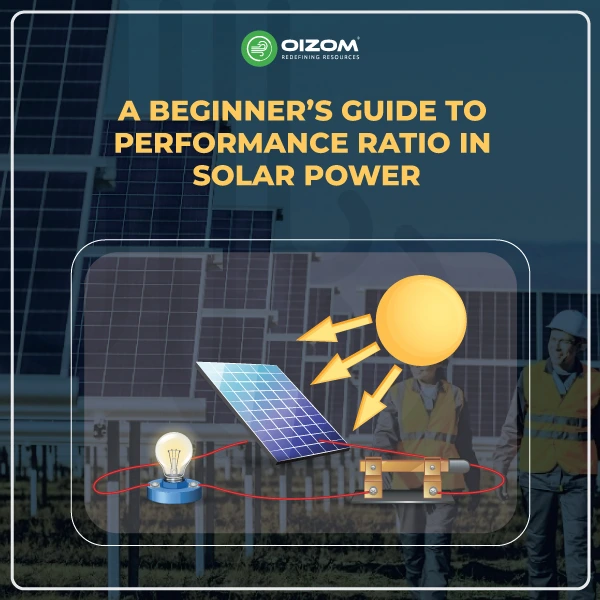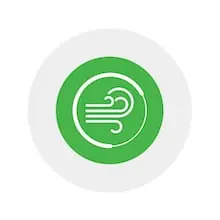Summary of Blog
Air pollution is the most severe environmental threat to public health globally, impacting our health, development, and environment. The top 10 most polluted cities in 2025 include New Delhi, India; Greater Noida, India; and Noida, India, among others, as discussed in the blog. Air pollution’s health impacts include respiratory conditions, cardiovascular diseases, and lung cancer, while environmental impacts encompass acid rain, eutrophication, and climate change. Economically, it leads to increased medical costs and reduced productivity. The top 5 most polluted countries are Bangladesh, Pakistan, India, Bahrain, and Nepal. Major causes of pollution include the use of fossil fuels, vehicular emissions, industrial activities, agriculture, and inadequate waste management. Efforts like the Paris Agreement aim to combat these issues. The blog underscores the urgent need for sustainable practices and cleaner technologies from companies like Oizom, which offers advanced air quality monitoring devices and provides real-time, accurate data. However, if we practice and adopt sustainability towards a cleaner future, we will achieve SDG 3, 11, 13, and 15 for the urban environment.
Introduction
“Air doesn’t come with a price tag, yet polluted air may be the costliest thing we consume daily.”
Beyond the visible haze, the true strain of dirty air lies in long-term health and economic crises. The damage in this case rarely comes from a single event; instead, it quietly builds up in rising hospital admissions, lost productivity, and shrinking life expectancy. In industrial valleys and congested basins, where pollutants persist and quickly build up, the cost of dirty air becomes a story written not just in statistics, but in everyday lives.
How Are “Most Polluted Cities” Determined?
Air quality monitoring involves collecting and analyzing samples of ambient air pollution to assess its levels. To evaluate the condition of the air, data from these samples are compared to clean air standards, historical data on air quality levels, and data on its effects on human health and the environment. First, let us understand the monitoring needs:
Identifying the purpose behind the monitoring of air quality:
- Your monitoring requirements may include tracking indoor pollution levels in your home or workplace, determining outdoor air quality for environmental projects, or ensuring compliance with industrial safety rules. Your options might be significantly reduced by defining your unique needs.
Which types of pollutants do you want to monitor:
- The EPA established National Ambient Air Quality Standards (NAAQS) for six common air pollutants, often referred to as “criteria” air pollutants, to protect human health and welfare nationwide. The contaminants are particulate matter, ozone, carbon monoxide, sulfur dioxide, nitrogen dioxide, and lead.
Did you know that Oizom launched its latest innovation, Pollusense, in November 2024? It’s a portable air quality monitor designed to provide accurate, real-time data on pollutants and environmental conditions. Equipped with advanced sensor technology, Pollusense utilizes laser-based PID, MPS, and electrochemical sensors to detect particulate matter, as well as gases such as NO2, CH4, and VOCs. This compact, portable device is ideal for industries, environmental audits, or anyone requiring flexible air quality monitoring on the go. With Pollusense, you get accurate insights wherever you are, ensuring you stay informed at all times.
Why does Pollusense truly stand out in the air quality monitoring space?
Because we don’t just build monitors; we build trust in data. Every Oizom air quality monitoring device is first calibrated in an ISO/IEC 17025:2017 certified lab using NIST-traceable gas standards, strictly following international guidelines (U.S. EPA Vol II, Section 6.0 Rev.1).
But we don’t stop there.
After lab calibration, each device undergoes a second level of testing, involving collocation with a custom-built reference station equipped with U.S. EPA-designated Federal Equivalent Method (FEM) analyzers. This double-layered approach ensures that Pollusense delivers data you can depend on every single time.
The Top 10 Most Polluted Cities in the World:
It’s said that the air we breathe is the essence of life. However, for residents of the following cities, the air they breathe daily might be far from pure. Air pollution has become a primary global concern in the last few decades, leading to numerous health and environmental challenges. Here’s a look at the world’s top 10 most polluted cities and the pressing need for change. Below, I will discuss the most polluted cities in the world in 2025.
World’s Most Polluted Cities in 2024-25
According to the 2024 World Air Quality Report by IQAir, 91.3% of countries and regions failed to meet the WHO’s safe air quality standards for PM2.5 pollution. New Delhi, the capital of India and part of the National Capital Territory of Delhi (NCT), has been named the most polluted city in the world, with an alarming AQI concentration of 169. Meanwhile, Delhi remains the world’s most polluted capital for the sixth consecutive year, recording an annual PM2.5 level of 108.3 µg/m³. The report also highlights that 13 of the 20 most polluted cities worldwide are in India, emphasizing the urgent need for air quality improvements.
| Rank | City | Country | AQI in 2025 Mid-Year |
|---|---|---|---|
| 1 | Byrnihat | India | 133 |
| 2 | New Delhi | India | 87 |
| 3 | Lahore | Pakistan | 115 |
| 4 | Ghaziabad | India | 159 |
| 5 | Faridabad | India | 154 |
| 6 | Noida | India | 161 |
| 7 | Karaganda | Kazakhstan | 104.8 |
| 8 | N’Djamena | Chad | 176 |
| 9 | Patna | India | 145 |
| 10 | Dera Ismail Khan | Pakistan | 161 |
1.Byrnihat, India

- Average AQI (2025): 133 µg/m³ (PM₂.₅ mid-year average)
- AQI Category: Hazardous
- Health Impact: Breathing contaminated air can increase the risk of respiratory illnesses and long-term chronic diseases.
- Who’s at Risk: Everyone, especially children, the elderly, and individuals with already existing lung or heart conditions.
- Key Concern: Pro-longed, extreme PM₂.₅ concentrations complicate mitigation efforts.
- Urgency: Highlights the need for aggressive enforcement of pollution controls, rapid transition to clean energy, and region-specific urban planning
Read more about how Byrnihat earned the label of the World’s Most Polluted City and its ongoing battle with air pollution.
2.New Delhi, India
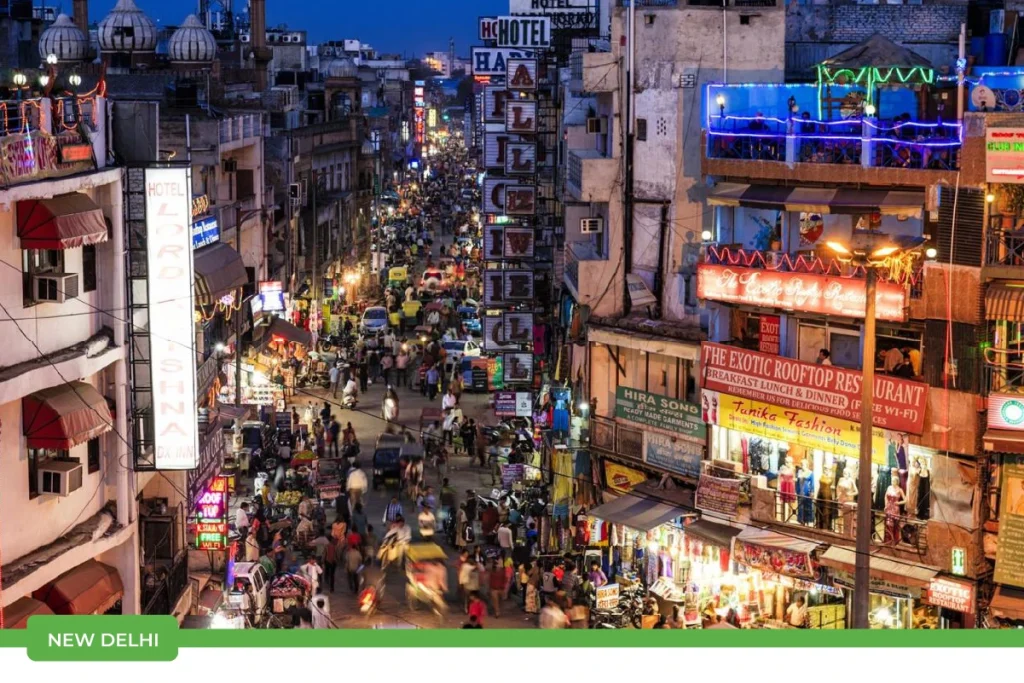
- City: New Delhi, India
- Average AQI (2025): 87 µg/m³ (PM₂.₅ mid-year average)
- AQI Category: Unhealthy
- Health Impact: Breathing the air is equivalent to smoking around two cigarettes a day
- Who’s at Risk: Children, the elderly, and those with respiratory conditions
- Key Concern: Toxic air continues to pose a daily health hazard despite ongoing mitigation efforts.
- Urgency: Highlights the need for stricter enforcement, cleaner fuels, and sustainable urban planning.
Despite these ongoing challenges, recent findings on Delhi recording its worst post-Diwali air quality in five years shed deeper light on how ‘green’ crackers still failed to curb pollution spikes, underscoring how fragile the city’s air quality remains and why stronger pollution-control measures are critical.
3.Lahore, Pakistan
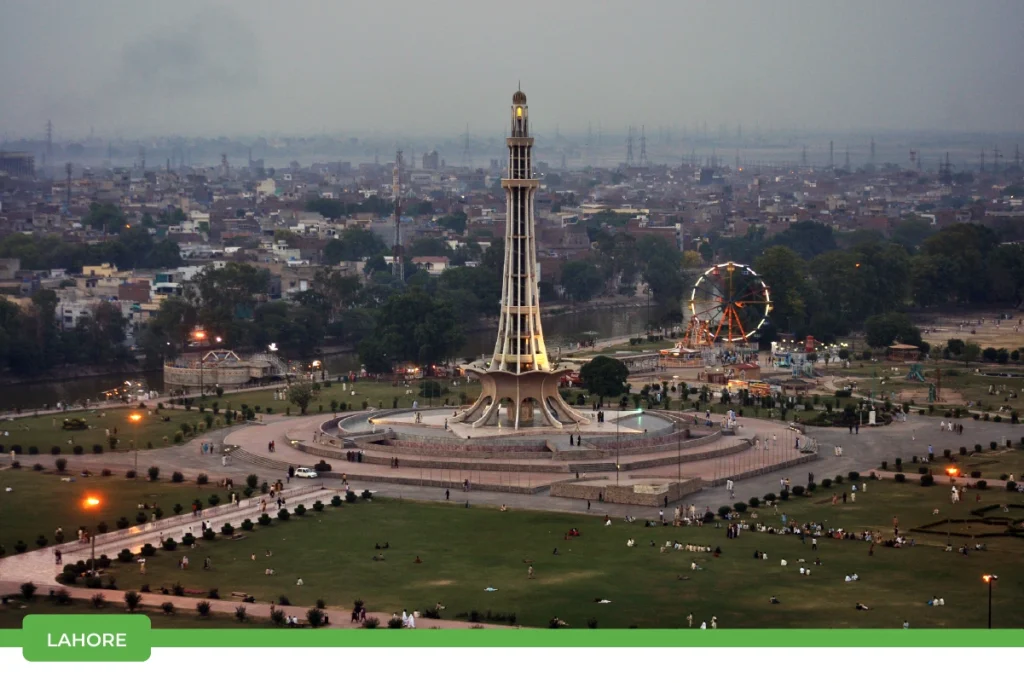
- Average AQI: ~115 µg/m³ (PM₂.₅ mid-year average)
- AQI Category: Unhealthy
- Health Impact: Continuous exposure intensifies chronic respiratory illnesses, affects lung growth in children, and increases cardiovascular risks
- Who’s at Risk: Children, people with asthma or heart conditions, and outdoor workers.
- Key Concern: Seasonal smog from burning and emissions traps pollutants, making outdoor exposure hazardous during winter
- Urgency: Highlights an urgent need for cleaner fuel policies, green buffer zones, and stricter industrial emission standards.
4.Ghaziabad, India

- City: Ghaziabad, India
- Average AQI (2025): 159 µg/m³
- AQI Category: Unhealthy
- Health Impact: Breathing the air is like smoking nearly two cigarettes a day
- Primary Pollutants: PM2.5, PM10 from traffic congestion, industrial emissions, and construction dust
- At-Risk Groups: Children, seniors, and people with respiratory or heart issues
- Impact: Regular complaints of coughing, chest tightness, and eye irritation
- Need for Action: Targeted dust suppression, emission checks, and greener infrastructure are urgently needed.
5.Faridabad, India

- City: Faridabad, India
- Average AQI (2025): 154 µg/m³
- AQI Category: Unhealthy
- Health Impact: Breathing the air is like smoking about two cigarettes a day
- Primary Pollutants: PM2.5, PM10 from industrial zones, traffic, and dust
- At-Risk Groups: Children, the elderly, and those with lung or heart conditions
- Impact: Common issues include throat irritation, fatigue, and difficulty breathing
- Need for Action: Cleaner fuels, stricter emission control, and better waste management are key
6.Noida, India

- City: Noida, India
- Average AQI (2025): 161 µg/m³
- AQI Category: Unhealthy
- Health Impact: Breathing the air is like smoking two cigarettes a day
- Main Pollutants: PM2.5, PM10 from vehicles, construction dust, and local industries
- At-Risk Groups: Children, the elderly, and those with asthma or heart conditions
- Impact: Residents face frequent headaches, throat irritation, and poor visibility
- Need for Action: Better traffic control, cleaner fuels, and localized air monitoring are critical.
7.Karaganda, Kazakhstan
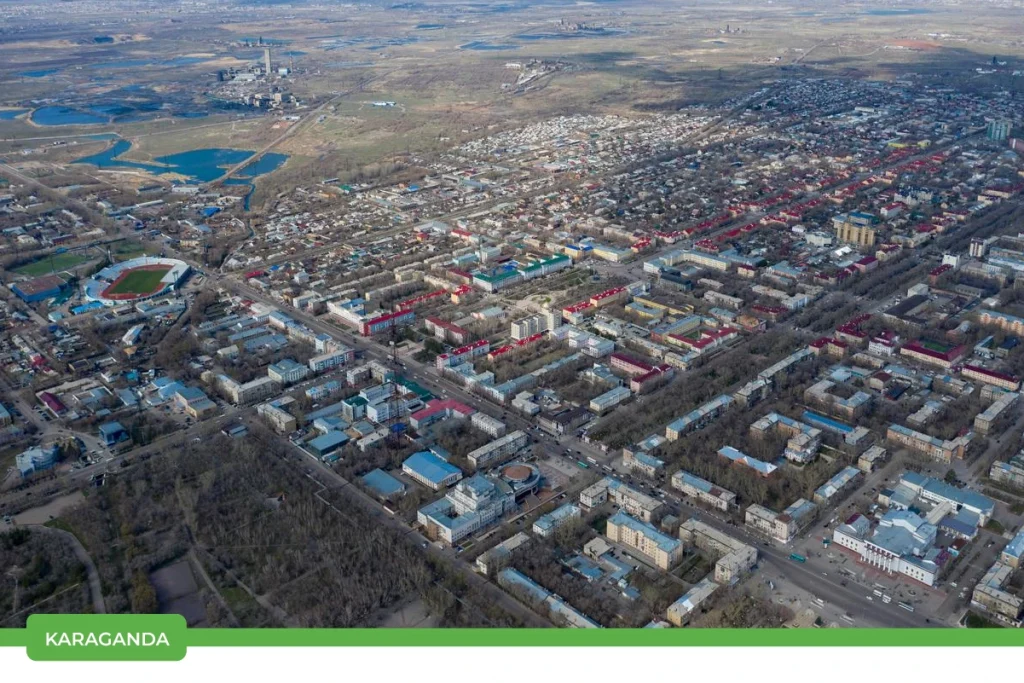
- Average AQI (2024 Reference): PM₂.₅ ≈ 104.8 µg/m³
- AQI Category: Hazardous
- Health Impact: Long-term exposure is linked to lung diseases, higher cardiovascular risks, and a public health burden
- Who’s at Risk: Miners, industrial workers, urban populations, children
- Key Concern: Heavy industrial activity and coal dependence exacerbate air quality issues in this region.
- Urgency: Amplified the immediate need for cleaner industrial technology, alternative energy adoption, and stricter emission regulations
8.N’Djamena, Chad

- Average AQI (2024 Estimate): Frequently reaches levels considered “Unhealthy for Sensitive Groups” or worse, around 176 µg/m³.
- AQI Category: Unhealthy
- Health Impact: Higher risks of respiratory infections, especially among children, and increased mortality from chronic diseases
- Who’s at Risk: Children, outdoor laborers, individuals with asthma or compromised immunity
- Key Concern: Persistent dust storms and biomass burning result in high PM₂.₅ levels, year-round
- Urgency: Highlights the need for sustainable land management, dust suppression programs, and accessible healthcare interventions
9.Patna, India
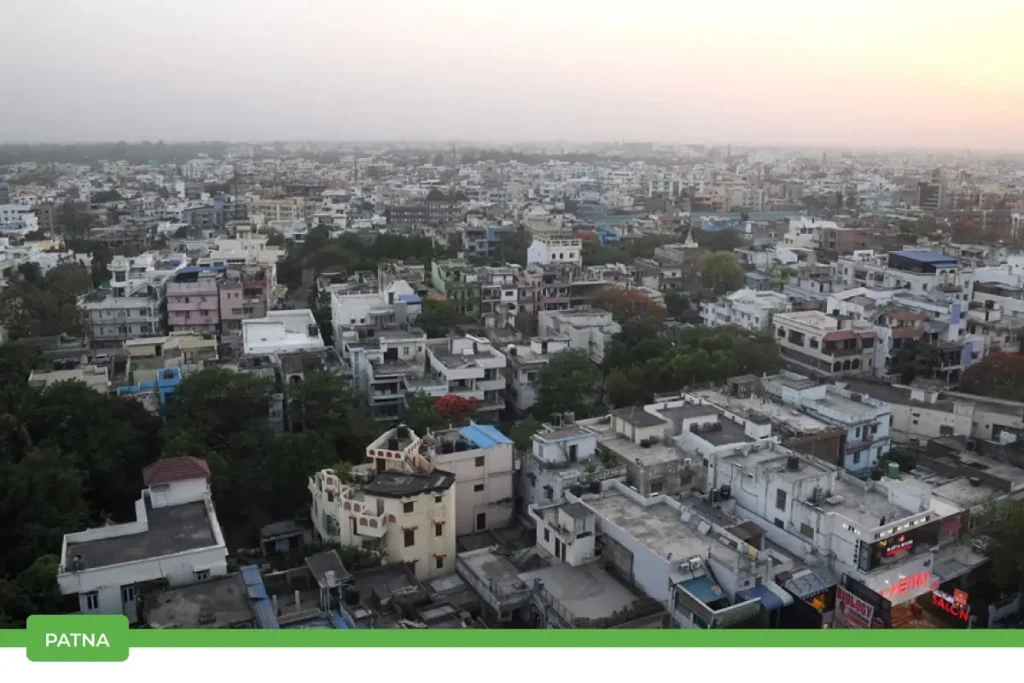
- City: Patna, India
- Average AQI (2025): 145
- AQI Category: Unhealthy for Sensitive Groups
- Health Impact: Breathing the air is like smoking over one cigarette a day
- Main Pollutants: PM2.5, PM10 from vehicle exhaust, open burning, and construction dust
- At-Risk Groups: Children, the elderly, pregnant women, and people with asthma or heart disease
- Impact: Mild breathing issues, eye irritation, and discomfort during outdoor activities
- Need for Action: Public awareness, adoption of clean fuels, and improved waste disposal practices are necessary.
10.Dera Ismail Khan, Pakistan
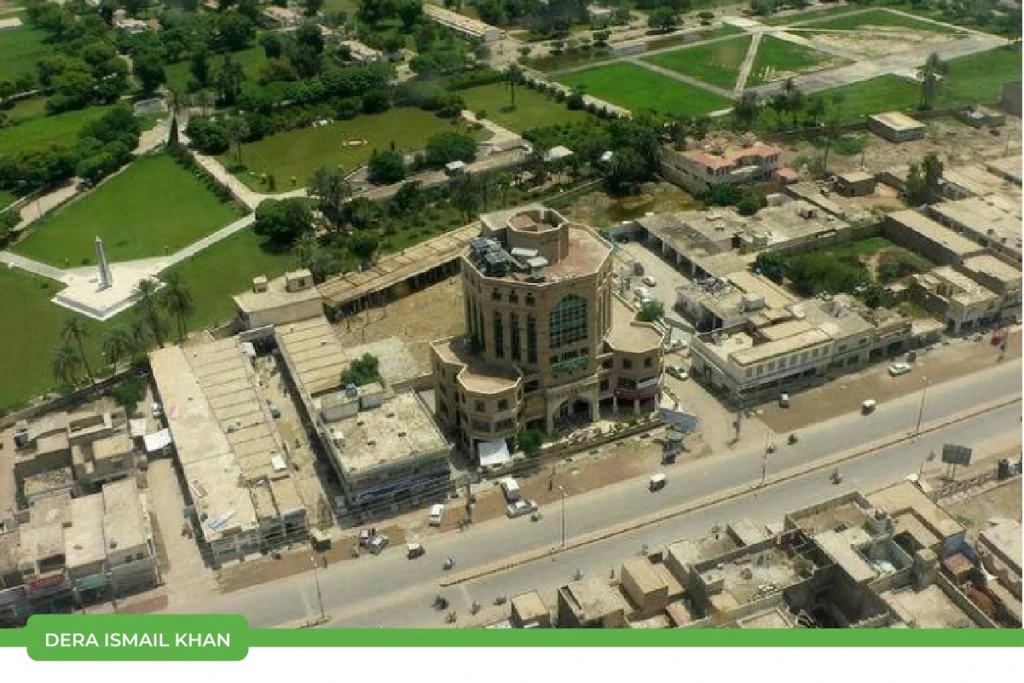
- Average AQI (2025 Estimate): Among mid-year top-polluted cities, around 161 µg/m³
- AQI Category: Unhealthy
- Health Impact: Chronic PM₂.₅ exposure leads to heightened risks of respiratory and cardiovascular conditions
- Who’s at Risk: Children, the elderly, and the rural population exposed to indoor/outdoor pollutants
- Key Concern: Agricultural burning and weak regulation increase pollution levels, especially in the plains
- Urgency: Stresses the need for clean crop residue management, emission regulations, and community health awareness
This ranking is based on the average AQI data for the first half of 2025 (January–June), along with trends from previous years. Air quality differs daily due to weather, seasonal changes, and local activities, so accurate numbers may vary when viewed later. However, the cities listed here show the regions that regularly rank among the world’s most polluted in terms of average air quality.
What Drives Pollution in These Cities?
Air pollution in these cities rarely arises from a single cause; it’s mostly a mix of urban growth, industrial expansion, and poor environmental supervision. In parts of New Delhi, Noida, and Ghaziabad, vehicular emissions remain significant contributors. Millions of vehicles run daily, with many depending on fossil fuels, releasing fine particulate matter (PM2.5, PM10) and nitrogen oxides that trap heat and aggravate smog.
Industrial zones add an extra hurdle. Byrnihat, for instance, is surrounded by heavy industries. These industries release sulfur oxides, volatile organic compounds (VOCs), and toxic dust, which rapidly accumulate due to weak dispersion in low-wind conditions. Such hotspots often record higher AQI levels than even major capitals.
Construction and infrastructure growth play a significant role, too. Dust from construction sites, roadwork, and unpaved areas primarily adds to PM levels. Without proper dust control measures, every new building or highway project affects air quality in the short term.
Seasonal and geographical factors further increase the problem. Northern Indian cities experience stubble burning every autumn, particularly in Punjab and Haryana, which drives harmful smoke into the Delhi NCR region. Whereas cities in industrial hubs like Gurgaon and Ghaziabad suffer from poor air circulation, trapping pollutants close to the ground.
Finally, energy demand binds everything together. Heavy dependence on coal-based power plants and diesel generators keeps pollution levels high. While the use of cleaner fuels and renewables is increasing, most of these cities still depend on coal and diesel, ensuring that air quality struggles remain a year-round challenge.
Health & Economic Costs
The impact of toxic air extends not only to the environment but also to people’s lives. Exposure to elevated levels of PM2.5, NO₂, and ozone for long periods is connected with the risk of respiratory diseases such as asthma, chronic bronchitis, and even lung cancer. In highly polluted cities such as Delhi and Ghaziabad, infants and the elderly are at the most significant risk, and studies have indicated a dramatic increase in hospitalization rates during peak smog seasons.
The financial cost is equally scary. According to some estimates by the World Bank, air pollution makes nations lose around 8% of their GDP in lost workforce productivity, healthcare costs, and premature mortality. In industrial towns, employees are exposed to poisonous dust and smoke, resulting in significant losses that can trigger a chain reaction affecting both local and national economies.
Regular sickness translates into fewer school days for kids and lower working hours for adults. In smog-tainted cities like Gurgaon and Faridabad, absenteeism rises, while productivity falls. Hidden costs, though never headline news, significantly impact households and businesses alike.
Health care systems in areas with high pollution levels commonly take the biggest hit as well. Cases of respiratory issues during peak seasons increase, leading to extra burdens on both governments and individuals. Together, these economic and health expenses illustrate that air pollution is not only an environmental issue, but it’s a development obstacle. Not only is cleaner air a public health requirement, but it is also an economic necessity for cities looking to develop sustainably.
Looking Ahead: Can Air Quality Improve?
Although current numbers create a bleak picture, the air quality story is still evolving. Multiple cities, such as Beijing and Mexico City, were once among the top polluters. However, due to concerted policy efforts, cleaner fuels, and civic enlightenment, they have turned around decades of dirty air. This gives hope that Indian and international hotspots might turn around with equal tenacity.
Technology is already unlocking possibilities. From basic sensors tracking local pollution to AI-based forecasting systems, data is providing citizens and authorities with more insights into when and where action is required. Renewable energy take-up, stricter emission standards, and more intelligent city planning are also increasingly progressing, though not steadily.
With booming populations and industrial demands, gains can feel like two steps forward, one step backward. Yet every major step back in particulate matter or nitrogen oxides translates into fewer doctor visits, healthier kids, and more efficient economies. The path may be gradual, but it’s quantifiable and significant.
The future is a delicate balancing act: meeting development needs without compromising clean air. With increased enforcement, new technologies, and community accountability, even the world’s most polluted cities stand a chance at redeeming their air quality narrative within the coming decade.
Conclusion
Clean air is invisible, but its value is undeniable. The narrative is not fixed, progress is being made, though slowly and to some extent unevenly, and every measure taken to curb emissions reduces both the human and economic burden. What was once considered the inevitable cost of industrial growth is now viewed as a solvable challenge. Recognizing that polluted air is among the most expensive things we “consume” daily is the first step toward rewriting the story, one where the true wealth of a community is measured not in output, but in the clarity of the air its people breathe. Implementing a reliable Air Pollution Monitoring System empowers cities and citizens alike to track pollution levels in real time, making informed decisions to protect public health and foster sustainable urban living.
To wrap things up, this blog dives into the top 10 least polluted cities in India. I hope you find these insights helpful and interesting!
FAQs
New Delhi, India, ranks as the most polluted city in 2025 with an average AQI of 169, falling in the ‘Unhealthy’ category.
The top 10 include New Delhi, Greater Noida, Noida, Ghaziabad, Faridabad, Gurgaon, Bhiwadi, Patna, Sonipat, and Muzaffarnagar, all located in India.
High air pollution can cause breathing problems, heart disease, and lung cancer, and is especially dangerous for children and the elderly.
The major causes include vehicle emissions, industrial activity, construction dust, crop burning, and poor waste management.
Devices like Oizom’s Pollusense provide real-time, accurate air quality data, helping individuals and organizations take informed action to reduce exposure and improve health outcomes.


